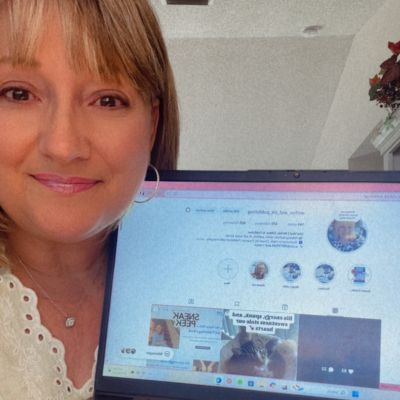“I started a website! I created an author page! I set up presale orders!”
These are not things a brand-new writing student typically tells you when they’re less than a month into coaching—but that’s exactly what one of my students shared with me.
This student, coming from a business background, understood the power of marketing even before her book was written. That’s amazing! She’s going to have readers ready and waiting to buy her book because she’s laying the groundwork early.
You can do the same. Today, I want to share key takeaways to help you build your author platform—whether you’re still outlining your first draft or polishing your manuscript for publication.

Why an Author Platform Matters
So many authors focus solely on writing but forget to prepare for who will read their book. One of the first things I ask any client is: Who is your audience?
Who is the person your book will help? Picture that audience as one individual. What do they look like? What are they interested in? What do they need most right now?
Once you answer those questions, you can tailor your writing, social media, and email communication to meet their needs. You’ll be offering the very solutions they’re searching for!
What Is an Author Platform?
Your author platform is simply your public presence—your ability to reach and engage readers.
Why it matters:
- It helps attract readers long before your book releases.
- It builds credibility and trust with your audience.
- It makes marketing and book sales easier later on.
Even traditional publishers look for authors who have an established platform—it signals potential success and readership.
Key Components of an Author Platform
1. Social Media Presence
Choose one or two main platforms where your audience spends time (Instagram, Facebook, X, or LinkedIn). You can find this out by searching for your book topic or related interests.
Post consistently—even if it’s just once or twice a week—sharing your writing process, behind-the-scenes updates, or personal insights. Don’t overthink perfection; focus on being relatable. Consistency is what counts.
Engage with your readers: reply to comments, ask questions, and share others’ content. Just remember to set boundaries so you don’t get lost scrolling—set a timer for 15-30 minutes max, engage, and then step away.
Be authentic: let your personality and values show through your posts. This speaks louder than anything else. You won’t be everyone’s “cup of tea,” but you will attract those who will relate to you and your message.
2. Author Website
A simple, professional website builds credibility and gives readers a “home base” to learn about you.
Start with free options like Wix, Square, or Beacons.ai, and consider purchasing your own domain (about $10–20 for the first year). You’ll also need hosting through a service like Bluehost or GoDaddy.
Must-have pages include:
- About: Share your story and purpose.
- Books: Include your cover, summary, and buy links.
- Blog: Optional, but great for SEO and reader connection.
- Contact: For readers, reviewers, and media.
Your website doesn’t need to be fancy—it just needs to reflect you. Clean, simple, and heartfelt is always best.
3. Email List
Your email list is the most reliable way to connect with readers—independent of social media algorithms.
Offer a freebie (a sample chapter, a devotional, or a tip sheet that you can offer from your area of expertise) to encourage sign-ups. Then, use your emails to nurture readers with updates, encouragement, and sneak peeks of your writing journey.
Even a small email list can become your most loyal, engaged community. These are the people who will pre-order your book, share your posts, and cheer you on when your launch day arrives.
Actionable Steps to Start Now
- Create a content calendar to plan your posts. Even if you’re a “pantser,” having a loose schedule keeps your content consistent and prevents repetition.
- Batch your content and reuse it across platforms. One blog post can become quote graphics, an email, and several social captions!
- Engage daily for 10–15 minutes with readers and other authors. Building community is about genuine connection, not numbers.
- Track your growth monthly by taking screenshots of your profile and saving them in a folder titled Social Media Growth. You’ll be encouraged when you see your progress over time. This one is so important! Don’t forget to get that screenshot when you’re starting out. This will be something you can use in future posts.
- Start small but stay consistent. Don’t worry about mastering every platform or posting daily. You can focus on one to become proficient in it. Consistency in small steps always wins over bursts of perfectionism.
How Anchor & Ink Publishing Helps Authors Build Their Brand
At Anchor & Ink Publishing, we don’t just help authors publish their books; we help them step confidently into their identity as writers.
Our services include author branding, social media strategy, and launch planning, all designed to help you establish a strong presence long before your book is released.
Because publishing isn’t just about getting your book into readers’ hands—it’s about connecting your message to the hearts that need it most. Every author has a story worth sharing and a community waiting to hear it. Let’s make sure they can find you. Start early. Build intentionally. And remember—your author platform isn’t about perfection; it’s about connection. Your voice, your story, and your message matter. Start building your author platform today—your future readers are waiting to meet you.
